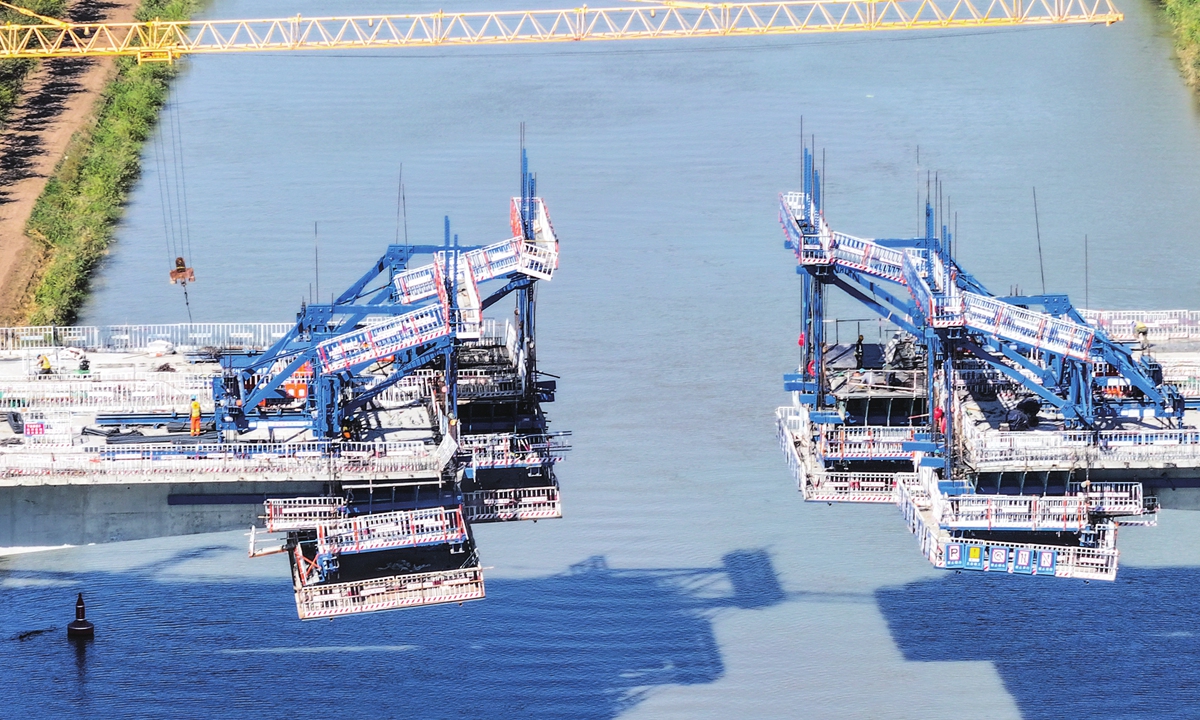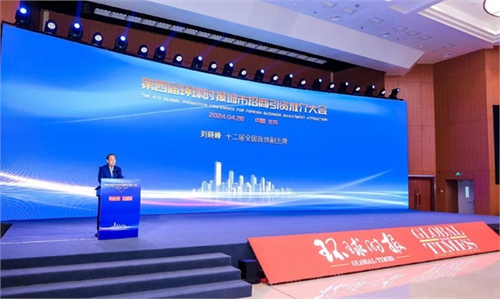Major projects worth of billions of yuan kick off for Q2 as analysts eye 5% growth in fixed-asset investment
Analysts eye 5% growth in fixed-asset investment

Workers build a bridge across the Guanyun section of the Lianyungang-Suqian expressway in East China's Jiangsu Province on November 6, 2023. China's infrastructure construction is accelerating, an indication that the central government aspires to do whatever is in its capacity to accelerate economic growth. Photo: cnsphoto
Many localities in China have recently launched major investment projects for the second quarter, with a focus on new quality productive forces, and observers believe the trend will help stabilize overall investment in the period.Analysts said on Wednesday that the new wave of major projects, along with an emphasis by localities on developing new quality productive forces, expanding domestic demand and improving the business environment, is to inject momentum into the economic recovery in the second quarter.
South China's economic powerhouse city Shenzhen started work on 236 projects slated for the second quarter with total investment of 176.65 billion yuan ($24.45 billion). Among those breaking ground on Wednesday were 51 industrial projects and 85 infrastructure projects.
On Tuesday, Northwest China's Xinjiang Uygur Autonomous Region called for further development of eight industrial clusters including oil and gas, green mining and new materials, and speeding up the development of strategic and emerging industries.
Localities including Central China's Hubei Province, East China's Anhui Province and Northwest China's Shaanxi Province have all held meetings to summarize economic work in the first quarter, and rolled out new projects for the second quarter with total investment exceeding the trillion-yuan mark.
Analysts noted the intense launch of projects will further fuel economic growth and overall investment - including foreign investment - in the second quarter.
Pan Helin, a Guangzhou-based economist, told the Global Times on Wednesday that these projects are being given special attention by local governments as they will form the nodes of regional economic development, aligning industrial chains and contributing to the build-up of industrial clusters. The overall result will be enhanced competitiveness in the corporate sector.
Pan predicted that fixed-asset investment could grow as fast as about 5 percent during the second quarter, gaining pace from the January-March period, as the industrial sector contributed much of the momentum.
In the first quarter, fixed-asset investment rose by 4.5 percent to 10 trillion yuan, according to data released by the National Bureau of Statistics in April.
"In the second quarter, manufacturing and infrastructure will remain the ballast stone to underpin the recovery," Zhou Maohua, a macroeconomist at China Everbright Bank, told the Global Times on Wednesday. Zhou noted that consumption is still in a recovery process, while investment into the property sector has abated.
Along with the faster roll-out of special-purpose bonds for local governments and the implementation of trade-in programs for equipment upgrades and consumer goods, as well as robust automobile production and sales, it is expected that fixed-asset investment may grow at a faster pace in the second quarter, Zhou said.
The Chinese economy got off to a good start in 2024, with first-quarter GDP exceeding estimates to grow at 5.3 percent year-on-year.
The country also recorded a brisk number of trips, spending data and box-office revenue during the just-ended five-day May Day holidays, reflecting growing momentum in the country's economic recovery.
Experts noted that efforts to further improve the business environment are equally important, as they allow for further vitality of market entities.




